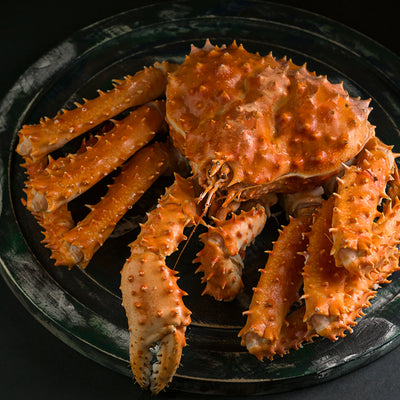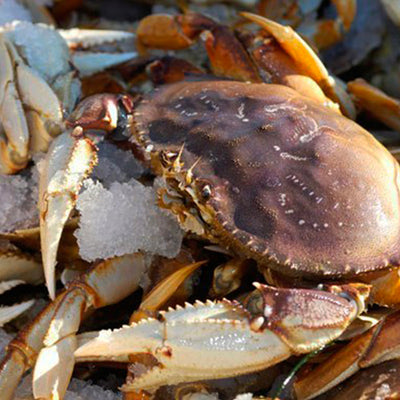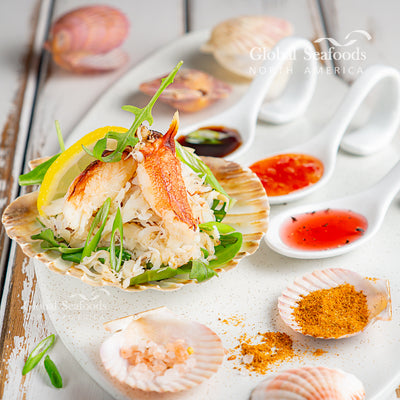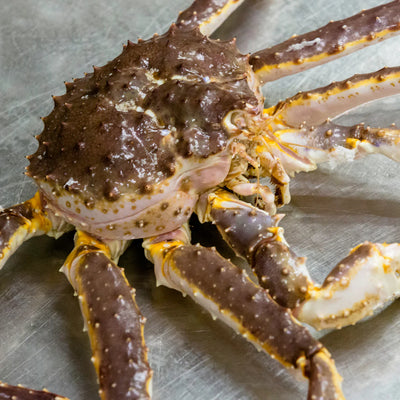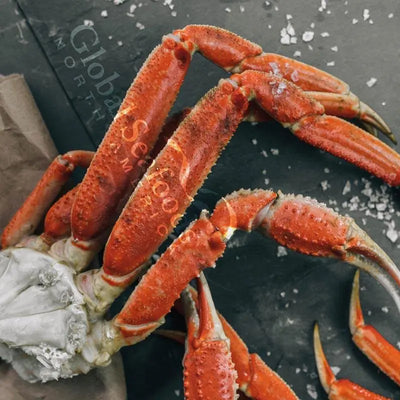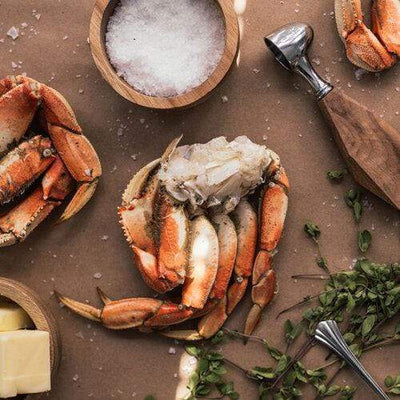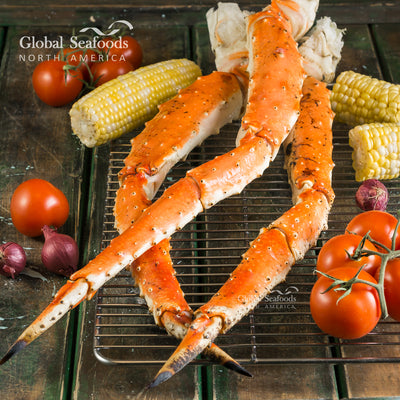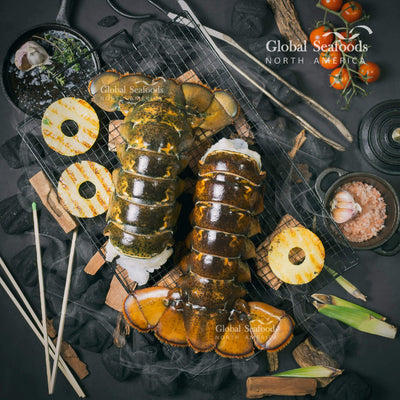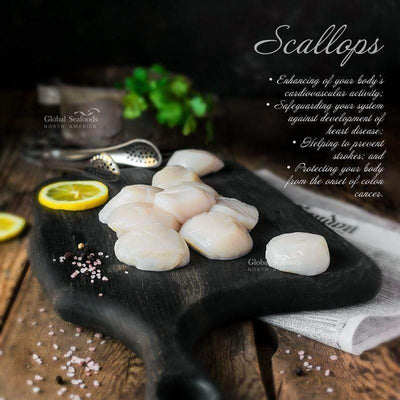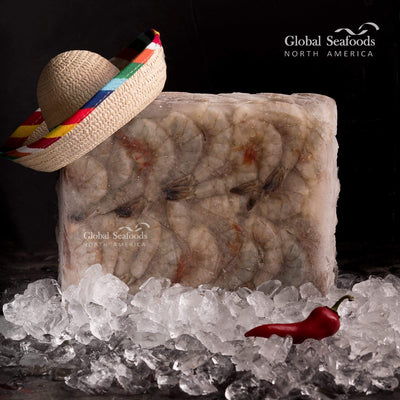The Best Crabbing Techniques for Pros: Tips and Tricks for a Successful Catch

Best Dungeness Crabbing Techniques
Dungeness crab is one of the most sought-after seafood delicacies, especially on the West Coast. Catching these crabs can be incredibly rewarding if you know the right techniques. Whether you're a seasoned pro or a beginner looking to up your crabbing game, learning the best Dungeness crabbing techniques can make a significant difference in your haul. In this guide, we’ll dive deep into pro tips, gear recommendations, and insider tricks to help you maximize your success.
For more expert crabbing videos and seafood tutorials, be sure to check out the Global Seafoods YouTube Channel.
Optimal Timing for Dungeness Crabbing: Tides, Seasons, and Weather
Timing is everything when it comes to catching Dungeness crab. These crabs are most active during specific seasons and times of day, making it crucial to know when to set your traps.
-
Best Season for Dungeness Crabbing: The prime season for Dungeness crab runs from late fall to early winter, typically starting in November and lasting through March. This is when crabs are fully grown and abundant.
-
Tide Matters: Crabbing experts recommend setting your traps during incoming or slack tides. During this period, crabs move closer to shore to feed, increasing your chances of catching them. Use online tide charts to plan your crabbing trips effectively.
-
Weather Conditions: Cool, overcast days are perfect for Dungeness crabbing, as crabs tend to be more active in cooler waters. Avoid crabbing in extreme heat or strong winds as these conditions may drive crabs into deeper waters.
Gear Recommendations for Dungeness Crab: Pots, Traps, and Nets
Using the right gear is essential for a successful Dungeness crabbing experience. Here are the top gear options pros use:
-
Crab Pots: These are the most effective for catching Dungeness crabs. Leave them submerged for several hours or overnight for the best results. Pots are ideal for use in deeper waters.
-
Ring Nets: Lightweight and easy to use, ring nets are great for beginners and are highly effective in shallow waters. You can easily retrieve them after 10-15 minutes to check your catch.
-
Box Traps: Used by commercial crabbers, box traps allow multiple crabs to enter and be captured at once. These traps are best used in deeper waters and can handle a large haul of Dungeness crabs.
Pro Tip: If you're shopping for Dungeness crab, explore Dungeness Crab Clusters or Whole Dungeness Crabs from trusted sources for the highest quality.
Best Baits for Dungeness Crabs: What Pros Use
Dungeness crabs are scavengers and are drawn to strong-smelling baits. Choosing the right bait can make all the difference in your crabbing success. Here are the most effective options:
- Chicken Necks or Backs: A popular and affordable bait option. The oily texture and smell of the chicken attract crabs quickly.
- Fish Carcasses or Heads: If you want to catch crabs fast, using fish heads or carcasses works wonders.
- Squid and Clams: These are ideal for trapping larger, more mature Dungeness crabs.
Some seasoned crabbers recommend mixing baits for a more potent attraction. Combining chicken with fish heads in your trap can increase the chances of catching more crabs in a shorter time frame.
Pro Placement of Crab Pots and Traps
Even the best traps and bait won’t yield results if they’re not placed correctly. Pros recommend placing traps in areas with slow water flow, such as tidal channels, estuaries, or near docks. These locations are where crabs naturally roam in search of food.
-
Trap Depth: For Dungeness crabs, setting your traps in waters that are 20 to 60 feet deep is optimal. Deeper waters, especially around piers or rocky areas, are ideal locations for Dungeness crabbing.
-
Leaving the Trap: Crab pots should be left in place for a minimum of 1-2 hours, but overnight sets often yield the best results, especially when crabbing in deep waters.
Understanding Dungeness Crab Regulations: Keep Your Catch Legal
Staying within legal limits is essential when crabbing for Dungeness crabs. Each state has different regulations for trap limits, size restrictions, and seasons to protect crab populations.
-
Size Limits: Dungeness crabs typically need to be at least 5.75 inches across the shell to be legally kept. Be sure to measure your catch with a crab gauge.
-
Trap Limits: Depending on your location, you may be limited to the number of traps you can set. In California, for example, recreational crabbers are limited to 10 traps per person.
By following these regulations, you help protect crab populations and support sustainable crabbing efforts. For those not interested in crabbing but craving Dungeness, shop Dungeness Crab Whole and Dungeness Crab Clusters from sustainable sources.
Sustainability and Conservation of Dungeness Crab
Sustainability is a significant concern for the crabbing industry. Overfishing can deplete crab populations, disrupting marine ecosystems and local economies. According to the Marine Stewardship Council (MSC), sustainable fishing practices are essential to ensure future crab populations thrive.
By adhering to legal catch limits and returning undersized crabs to the water, recreational crabbers contribute to long-term sustainability. Many Dungeness crab fisheries are MSC-certified, meaning they adhere to the strictest standards for sustainable fishing.
When purchasing Dungeness crab, choose vendors that prioritize sustainability, like Global Seafoods, which ensures that all products are responsibly sourced.
Conclusion: Mastering the Art of Dungeness Crabbing
By following these expert techniques, from selecting the right gear to knowing the best times and bait for crabbing, you'll be on your way to a more successful and sustainable Dungeness crab harvest. Whether you're setting traps from a boat or crabbing from shore, applying these pro Dungeness crabbing tips will improve your results and enhance your overall experience.
For more crabbing tips, seafood recipes, and exclusive products, be sure to visit Global Seafoods and subscribe to their YouTube channel for updates on everything seafood.
Related Products to Explore:
- Dungeness Crab Whole
- Dungeness Crab Clusters
- Snow Crab Legs Clusters
- Golden King Crab
- Buy and Prepare King Crab
- Red Caviar
Also in News

How to Make Sea Bream Sushi With Dry-Aged Tuna & Crab Roll — Step-by-Step With Chef Joshua
A complete guide to making Sea Bream sushi at home, including filleting, curing, slicing, and building a Dry-Aged Tuna & Crab sushi roll. Chef Joshua shares professional tips for restaurant-quality results.

The Boiled Crab in Popular Culture: From Cajun Cuisine to Trendsetting Restaurant Phenomenon
From spicy Cajun-inspired seafood boils to hands-on dining experiences, The Boiled Crab has left a unique mark on popular culture. Discover its cultural roots and culinary influence.

Boiled Crab for Game Night: Everything You Need for a Perfect Seafood Party
Take your game night to the next level with a Boiled crab party. Learn the best recipes, cooking tips, and hosting hacks for a memorable seafood feast.

